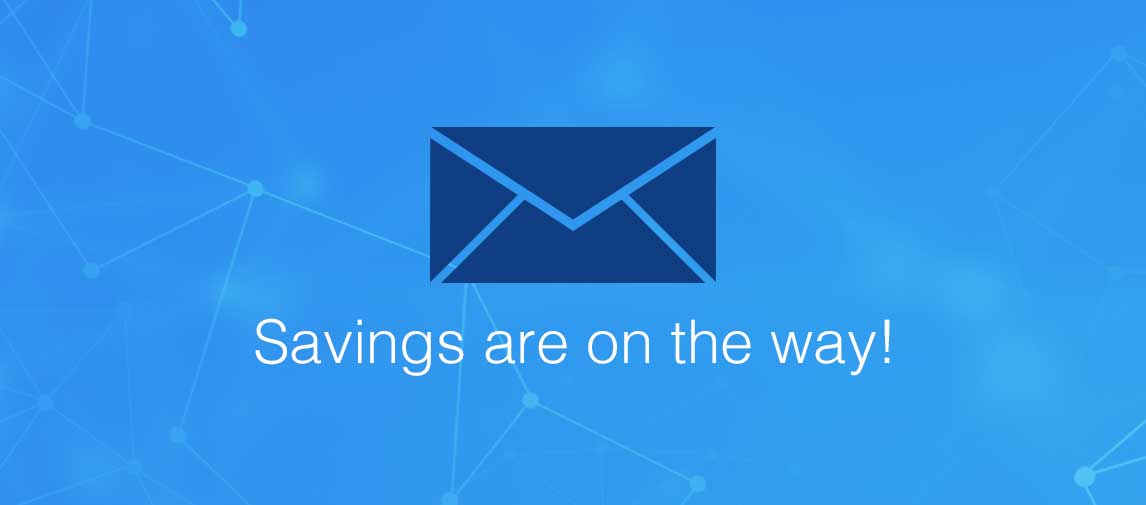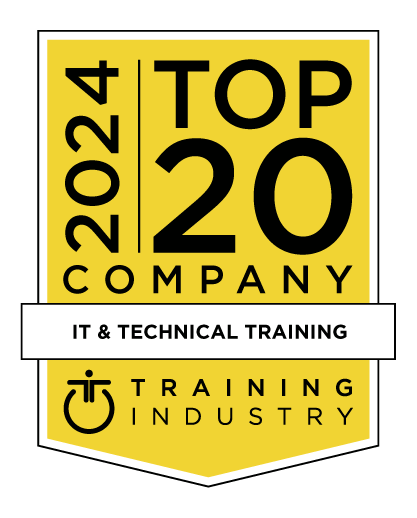title
Please take a moment to fill out this form. We will get back to you as soon as possible.
All fields marked with an asterisk (*) are mandatory.
Microsoft Dynamics 365 Supply Chain Management
Course Description
Overview
This course is designed to build your foundation in Dynamics 365 Supply Chain Management application knowledge. This course will cover the most important features and functionalities needed by Dynamics 365 Supply Chain Management functional consultant including: The product information and how to configure, create, and manage your product and inventory. Supply chain management configuration and processing. The transportation management features, and the warehouse management features. Quality management and quality control functionalities. Master planning configuration and processing. This course includes lectures and several hands-on exercises. The exercises will be introduced to you in the form of a case study presented to a Dynamics 365 Supply Chain Management functional consultant. Each exercise will be based on a business scenario followed by a question or discussion then a step-by-step guidance to perform the system related steps.Objectives
Audience
Topics
- Introduction
- Benefits of Supply Chain Management
- Overview of Supply Chain Management
- Cost accounting
- Cost management
- Inventory management and Warehouse management
- Master planning
- Procurement and sourcing
- Vendor collaboration
- Sales and marketing
- Customer portal
- Product information management
- Production control
- Intercompany trade
- Warehouse management
- Transportation management
- Lab - Explore Dynamics 365 Supply Chain Management
- Check your knowledge
- Introduction
- Product information workspace
- Concept of a product
- Create products
- Set up unit conversions
- Batch disposition codes
- Default order settings
- Define products as not stocked
- Create product masters with variants
- Gain productivity by using the Variant suggestions page
- Create and set up category hierarchies and attributes
- Set up item pricing
- Lab - Create a product and product master
- Check your knowledge
- Introduction
- Inbound operations
- Outbound operations
- Configure inventory dimensions
- Configure storage dimensions
- Configure tracking dimensions
- Configure serial and batch numbers
- Allocate batch and serial numbers
- Configure sites
- Configure warehouses
- Transfer orders
- Set up bar codes
- Set up default order settings
- Inventory journals
- Work with journals
- Inventory journal approval workflows
- Work with reason codes
- Work with consignment inventory
- Configure item groups and item model groups
- Inventory cost methodologies
- Configure inventory policies
- Inventory closing and adjustment
- Archive inventory transactions
- Work with reason codes for inventory counting
- Lab - Work with inventory management
- Check your knowledge
- Introduction
- Roles in warehouse management
- Set up warehouse management
- Configure the warehouse layout
- Configure catch weight processing for warehouse management
- Warehouse processes
- Reservation hierarchies
- Lab - Configure warehouse management
- Check your knowledge
- Introduction
- Work with the BOM designer
- BOM and formula versions
- BOM line types
- BOM levels
- Exercise - Create a BOM in the BOM Designer
- Check your knowledge
- Introduction
- Create an engineering organization
- Create nomenclature for product versions
- Create product version number rules
- Create product dimension groups by using the version dimension
- Create product life cycle states
- Engineering attributes
- Product readiness policies
- Product release policies
- Create engineering categories
- Exercise - Create a product readiness policy
- Check your knowledge
- Introduction
- Enable warehousing telemetry
- Warehouse implementation workspace
- Wizard-driven setup of Warehouse Management parameters
- Wizard-driven warehouse configuration
- Simplified query view of location directives
- Check your knowledge
- Introduction
- Inbound operations
- Inbound advanced shipping notices
- Cross dock products from receiving warehouse to stores
- Create a GTIN code for a product
- Wizard-driven setup of Warehouse Management parameters
- Exercise - Register a load where items are missing
- Check your knowledge
- Introduction
- Outbound operations
- Warehouse work
- Cluster picking
- Packing and containerization
- Packing containers with the Warehouse Management mobile app
- Transfer orders and replenishment
- Exercise - Set up a cluster profile
- Check your knowledge
- Introduction
- Cycle counting
- Material handling equipment interface
- Exercise - Create a cycle counting plan
- Check your knowledge
- Introduction
- Global mobile device parameters
- Set up and deploy GS1 and QR bar codes
- Set up work type menu items
- Set up mobile app step instructions
- Set up detours for steps in mobile device menu items
- Exercise - Set up a detour for a step in a task flow
- Check your knowledge
- Introduction
- Costing versions
- Cost groups
- Calculation groups
- Costing sheets
- BOM calculations
- BOM Measurements
- BOM Reports
- Lab - Analyze BOM costs by using the costing sheet
- Check your knowledge
- Introduction
- Work with trade agreements
- Create sales agreements
- Create purchase agreements
- Configure trade allowance management
- Configure brokerage contract management
- Configure royalty contract management
- Configure vendor rebates
- Rebate management module
- Exercise - Create a purchase agreement
- Exercise - Generate and process customer rebates
- Exercise - Create trade agreements
- Check your knowledge
- Introduction
- ABC inventory classification
- Physical inventory by inventory dimension report
- Inventory value report
- Inventory on-hand report storage
- Inventory on-hand mobile workspace
- Exercise - Use the ABC classification report
- Exercise - Use the Physical inventory by inventory dimension report
- Exercise - Export a report to Microsoft Excel
- Check your knowledge
- Introduction
- Configure quality management
- Perform quality control and management processes
- Describe transactions types and create quality orders
- Apply inventory blocking
- Perform quarantine management
- Exercise - Create and process a quality order
- Exercise - Create and process a nonconformance order
- Check your knowledge
- Introduction
- All assets page
- Create an asset
- Multi-level assets
- Copy an asset or asset structure
- Move, remove, and install an asset
- Create assets based on purchase orders
- Asset bills of materials
- Asset event history
- Asset view
- Asset attribute overview
- Lab - Work with assets
- Check your knowledge
- Introduction
- Maintenance plans
- Interval types
- Assign a maintenance plan to an asset
- Schedule maintenance plans
- Maintenance rounds
- Maintenance schedule
- Maintenance schedule cost
- Maintenance downtime
- Exercise - Create a maintenance plan
- Exercise - Update the maintenance schedule
- Check your knowledge
- Introduction
- Manually create work orders
- Maintenance forecasts
- Procurement of work order purchase requisitions
- Bill customers for maintenance work
- Manual update of asset counters
- Automatic update of asset counters
- Maintenance checklists
- Maintenance downtime
- Add a fault to a work order
- Work order report
- Work order pools
- Active work order maintenance jobs page
- Work order management workspace
- Exercise - Create and manage work orders
- Check your knowledge
- Introduction
- Configure workers for work order scheduling
- Schedule and dispatch work orders
- Calculate capacity load on scheduled work orders
- Lab – Set up a preferred worker, and schedule a work order
- Check your knowledge
- Introduction
- Procurement scenario
- Overview of the procure-to-purchase process
- Set up procurement categories
- Use procurement catalogs
- Create a purchase requisition
- Create and process a request for quotation
- Create purchase orders
- Vendor categories and catalogs
- Evaluate a vendor and put a vendor on hold
- Use purchasing policies
- Lab - Work with procure-to-purchase processes
- Check your knowledge
- Overview of the purchase order process
- Set up purchasing parameters
- Use purchase order change management
- Use Item arrivals and Arrival overview
- Manage over/under delivery for purchase orders
- Manage charges for purchase orders
- Create vendor returns
- Lab - Create and process a purchase order
- Check your knowledge
- Introduction
- Purchase order statuses with vendor collaboration
- Configure vendor collaboration
- Maintain vendor certification
- Set up vendor collaboration security roles
- Use the Vendor collaboration invoicing workspace
- Define purchase order response information
- Work with purchase orders when vendor collaboration is used
- Purchase order statuses and versions
- Sharing information about consignment inventory
- Work with request for quotes
- Purchase order confirmation workspace
- Accessing vendor master data in the Vendor information workspace
- Exercise - Set up an external role for a vendor
- Check your knowledge
- Introduction
- Payment schedule
- Terms of payment and payment days
- Cash discounts
- Payment fees
- Set up the credit card payment service
- Methods of payment and payment control
- Set up a payment calendar and payment calendar rules
- Create and maintain customers
- Set up customer posting profiles
- Configure accounts receivable charges
- Lab - Configure customer posting profiles and create a new customer
- Check your knowledge
- Introduction
- Prerequisites and mapping setup
- Sales quotations
- Sales orders
- Dual-write solution for Sales
- Invoices
- Limitations
- Demonstration - Create and edit sales quotations
- Check your knowledge
- Introduction - Order to cash process
- Sales and marketing overview
- Create and confirm sales quotations
- Create and process sales orders
- Sales order entry scenarios
- Sales order picking processes
- Configure order promising
- Configure order hold codes
- Process customer returns
- Sales order reservations
- Configure and use commissions
- Configure customer and item search
- Lab - Create a sales order and work with commissions
- Check your knowledge
- Introduction
- Intercompany trading
- Set up intercompany trade
- Process intercompany chain orders
- Set up intercompany agreements and direct deliveries
- Lab - Configure intercompany relations
- Exercise - Process a purchase order-initiated intercompany chain
- Exercise - Process a sales order-initiated intercompany chain
- Exercise - Process returns in intercompany
- Exercise - Process an intercompany direct delivery
- Check your knowledge
- Introduction
- Landed cost concepts and terminology
- Landed cost parameters
- Set up voyages and shipping containers
- Set up delivery information
- Set up multi-leg journeys
- Set up shipping information
- Set up costing parameter values
- General ledger integration configuration
- Vendor settings for Landed cost
- Lab - Create a voyage leg
- Check your knowledge
- Introduction
- Planning transportation management
- Configure transportation management
- Routing and transportation flows
- Load building strategy
- Transportation management engines
- Bill of lading
- Plan freight transportation routes with multiple stops
- Reconcile freight in transportation management
- Lab - Explore transportation management
- Check your knowledge
- Production input location
- Production output location
- Staging and order picking
- Release BOM and formula lines to the warehouse
- Cross-docking
- Planned cross docking
- Visibility into material exceptions
- Lab - Work with warehouse management in manufacturing
- Check your knowledge
- Introduction
- Master planning considerations and set up
- Master planning parameters page
- Create a master plan
- Coverage settings
- Action messages
- Demand Forecasting
- Run plans and firm planned orders
- Set up and use the Supply schedule page
- Exercise - Firm a planned order
- Exercise - Change a planned order type
- Deprecated master planning
- Check your knowledge
- Introduction
- Set up master planning add-in
- Apply filters to a plan
- Master planning with demand forecasts
- Master planning support for capability-based resource allocation
- Priority-based planning
- Master planning and purchase trade agreements
- Safety margins
- Coverage time fences
- Approved planned orders
- Generate planned production orders
- Analyze and approve planned orders
- Auto-firming
- Planning with negative on-hand quantities
- View history and planning logs
- Cancel a planning job
- Exercise - Set up purchase trade agreements
- Exercise - Approve a planned order
- Check your knowledge
- Introduction
- Describe costing methods
- Describe item arrival journals and cross-docking
- Describe inventory reservations, picking and packing, replenishment, and shipments
- Describe inventory counting and inventory on-hand concepts
- Describe quality management capabilities
- Describe use cases for Warehouse Management Systems (WMS)
- Describe use cases for Transportation Management Systems
- Knowledge check
Related Courses
-
Manage Financial Operations with Dynamics 365 Finance
MOC-MB-310T00- Duration: 4 Days
- Delivery Format: Classroom Training, Online Training
- Price: 2,380.00 USD
-
Microsoft Dynamics 365: Finance and Operations Apps Developer
MOC-MB-500T00- Duration: 5 Days
- Delivery Format: Classroom Training, Online Training
- Price: 2,975.00 USD
Self-Paced Training Info
Learn at your own pace with anytime, anywhere training
- Same in-demand topics as instructor-led public and private classes.
- Standalone learning or supplemental reinforcement.
- e-Learning content varies by course and technology.
- View the Self-Paced version of this outline and what is included in the SPVC course.
- Learn more about e-Learning
Course Added To Shopping Cart
bla
bla
bla
bla
bla
bla
Self-Paced Training Terms & Conditions
Exam Terms & Conditions
ONCE YOU PURCHASE THIS EXAM YOU WILL NOT BE ABLE TO CANCEL YOUR ORDER. You are billed for the course after hitting submit. Exams are non-refundable.
Vouchers expire 12 months from the date they are issued, unless otherwise specified in the terms and conditions. Voucher expiration dates cannot be extended. All sales are final.Please refer to the full terms and conditions here.
Sorry, there are no classes that meet your criteria.
Please contact us to schedule a class.

STOP! Before You Leave
Save 0% on this course!
Take advantage of our online-only offer & save 0% on any course !
Promo Code skip0 will be applied to your registration
Purchase Information
title
Please take a moment to fill out this form. We will get back to you as soon as possible.
All fields marked with an asterisk (*) are mandatory.










